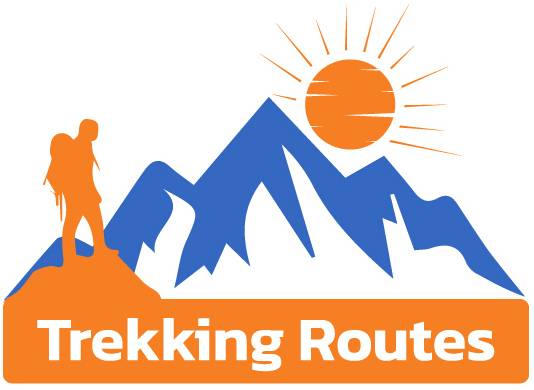Trekking is an incredible way to connect with nature and challenge yourself physically. However, it’s not an activity that can be taken lightly. Whether you plan to hike the Himalayas or explore local mountain trails, improving your trekking strength is essential for enjoyment and safety. Building endurance, strength, and flexibility will help you navigate tough terrains, carry your gear, and avoid injuries. In this Tips to Boost Your Trekking Strength guide, we’ll cover comprehensive strategies to improve your trekking strength, ensuring that you are ready for any adventure that comes your way.
Cardiovascular Fitness
A strong cardiovascular system is the backbone of successful trekking. This is because trekking, especially in hilly or mountainous regions, demands sustained energy and efficient oxygen use. Cardiovascular fitness improves your stamina, allowing you to trek longer distances without feeling exhausted.
Aerobic Exercise
Aerobic exercise is a vital part of building endurance. Activities such as running, swimming, and cycling are perfect for improving heart and lung capacity, both of which are critical for tackling tough trails. Running, for instance, strengthens your legs and boosts your stamina, which will help when ascending steep inclines. Swimming provides a full-body workout without putting stress on your joints, making it great for people with joint issues or for those needing a low-impact workout. Cycling, on the other hand, not only improves cardiovascular endurance but also strengthens the muscles in your legs, which are essential for trekking.
To maximize your aerobic fitness, aim for three to five sessions of aerobic exercise per week, with each session lasting 30 to 60 minutes. A consistent routine will gradually build your stamina, ensuring you can tackle long treks with ease.
High-Intensity Interval Training (HIIT)
For those pressed for time, High-Intensity Interval Training (HIIT) is an excellent option. HIIT workouts consist of short bursts of high-intensity activity, followed by low-intensity recovery periods. This form of training rapidly improves endurance and mimics the start-stop nature of trekking, where you might experience intense bursts of effort followed by moments of rest.
For instance, alternating between sprinting for 30 seconds and walking for 1 minute, repeated for 20-30 minutes, can significantly boost your stamina in a short amount of time. Incorporate HIIT workouts two to three times per week into your training routine for maximum benefits.
Strength Training
While cardiovascular fitness allows you to sustain energy over long treks, strength training equips you with the muscle power necessary to carry your gear and ascend steep paths. Strength training builds muscle endurance, helping you maintain balance and control on uneven terrains.
Resistance Exercises
Resistance exercises are particularly important for trekking because they strengthen the muscles in your legs, core, and upper body. Exercises like squats, lunges, and deadlifts target the large muscle groups, providing the power you’ll need for uphill climbs and maintaining balance on rocky paths. Squats, for example, strengthen the quadriceps and glutes, which are critical for climbing. Lunges work on your balance and leg strength, preparing you for the uneven terrains you’ll face during a trek. Deadlifts focus on the lower back and hamstrings, improving your posture while carrying a heavy backpack.
It’s essential to maintain proper form when performing these exercises to avoid injury. Aim to incorporate strength training two to three times per week, with each session lasting 45-60 minutes. For each exercise, perform three sets of 8-12 repetitions.
Bodyweight Exercises
Bodyweight exercises are another effective method for building trekking strength, particularly if you don’t have access to gym equipment. These exercises use your own body weight for resistance and can be done anywhere. Push-ups, planks, and step-ups are excellent bodyweight exercises for trekkers. Push-ups strengthen your upper body and core, which is crucial for maintaining balance, especially when carrying gear. Planks build a strong core, helping you stabilize on uneven trails. Step-ups mimic the motion of climbing, targeting your quads and glutes.
For the best results, perform bodyweight exercises three to four times a week. As with any strength training, consistency is key.
Flexibility and Mobility
Flexibility and mobility are often overlooked in trekking training, but they are just as important as strength and endurance. Improved flexibility reduces your risk of injury and enhances your movement, making it easier to navigate steep climbs and descents.
Stretching Routines
Stretching before and after your training sessions helps prevent muscle strains and increases your range of motion. Dynamic stretches, such as leg swings and arm circles, are great for warming up before a trek. These stretches get your blood flowing and prepare your muscles for activity. After your workout, focus on static stretches like hamstring stretches and quad stretches. These longer, held stretches help lengthen tight muscles, reduce soreness, and speed up recovery.
A stretching routine should take 10-15 minutes and can be done after any workout or trek. Flexibility is a crucial part of injury prevention, so make it a priority in your training.
Foam Rolling and Myofascial Release
Foam rolling is a highly effective tool for recovery and injury prevention. It works by applying pressure to specific areas of your muscles to release tightness, reduce inflammation, and improve circulation. Rolling your quads, hamstrings, calves, and lower back helps alleviate soreness after a long trek and keeps your muscles loose.
After each training session or trek, spend 10-15 minutes foam rolling key muscle groups. Not only will this improve your flexibility, but it will also reduce muscle stiffness and prevent injuries, ensuring you can keep trekking without interruptions.
Nutrition and Hydration
Your training and fitness efforts will only be as effective as the fuel you provide your body. Proper nutrition and hydration are vital for sustaining energy and maintaining endurance on long treks.
Macronutrient Balance
A balanced diet of carbohydrates, proteins, and fats provides the energy and muscle recovery needed for trekking. Carbohydrates are your primary source of energy, especially during long treks. Whole grains, fruits, and vegetables are excellent sources of slow-burning carbs that will fuel your body for hours. Proteins, found in lean meats, eggs, and plant-based sources, are crucial for muscle repair and recovery. Healthy fats, such as those in nuts, seeds, and avocados, provide long-lasting energy and help regulate body temperature.
Aim for a diet that consists of 50-60% carbohydrates, 20-30% protein, and 10-20% fats. This macronutrient balance will ensure you’re fueled properly for your trek.
Hydration Strategies
Staying hydrated is critical during any trek, as dehydration can lead to fatigue, cramps, and even heat exhaustion. Make it a goal to drink 2-3 liters of water daily, and increase this amount on trekking days. If you’re trekking in high altitudes or hot climates, it’s essential to replenish electrolytes by drinking sports drinks or eating electrolyte-rich foods. Watch for signs of dehydration, such as dark urine, dry mouth, or dizziness, and adjust your fluid intake accordingly.
Training Programs and Progressions
Beginner Trekking Training Plan
If you’re new to trekking, it’s important to start slow and build your strength gradually. A beginner training plan should last for about 12 weeks, allowing you to progress steadily.
- Weeks 1-4: Start with low-impact aerobic activities like walking or light jogging for 30 minutes, three times per week. Complement this with bodyweight exercises such as squats and planks.
- Weeks 5-8: Increase your aerobic activity to 45 minutes and introduce resistance training exercises like lunges and deadlifts.
- Weeks 9-12: Incorporate HIIT workouts and increase the duration and intensity of both aerobic and strength training exercises.
Intermediate/Advanced Trekking Training Plan
For those with some trekking experience, a more intensive 16-week training plan can help you push your limits.
- Weeks 1-4: Focus on strength training and HIIT workouts 4-5 times per week. Include bodyweight exercises like push-ups and step-ups to build muscle endurance.
- Weeks 5-8: Increase the duration of aerobic exercises to 60 minutes and start incorporating weighted resistance exercises like barbell squats.
- Weeks 9-16: Add in cross-training activities such as cycling or swimming to further build endurance and vary your workouts.
Injury Prevention and Recovery
Common Trekking Injuries
Trekking can take a toll on your body, and it’s important to be aware of common injuries and how to prevent them. Blisters, sprains, and tendinitis are frequent issues faced by trekkers. Wearing proper footwear, stretching before and after treks, and strengthening your muscles through targeted exercises can prevent these injuries. If you do get injured, make sure to rest, ice the affected area, and avoid strenuous activity until fully healed.
Recovery Strategies
Recovery is just as important as the training itself. After a long trek, your body needs time to heal and rebuild muscle tissue. Light activities like walking or yoga are excellent for active recovery, helping to increase circulation and reduce stiffness. You can also use recovery techniques like ice baths and massages to reduce muscle soreness and inflammation. Make sure to get adequate sleep and nutrition to facilitate full recovery before your next trek.
Conclusion
Improving your trekking strength is a journey that requires dedication, but the rewards are worth it. By focusing on cardiovascular fitness, strength training, flexibility, proper nutrition, and injury prevention, you’ll be well-equipped to handle any trekking challenge. Stick to a consistent training routine and make gradual progress in your workouts. With these strategies in place, you’ll not only enjoy your treks more but also be able to explore even the most challenging trails with confidence.







1 Comments
Hiking 1st Aid Kit Essentials for Your Outdoor Adventures - Trekking Routes May 25th, 2025
[…] improve your trekking strength and prepare for your next adventure, check out our guide on How Can I Improve My Trekking Strength? Building strength is a key part of ensuring you’re physically prepared for the demands of […]